
The Canary Islands, also known informally as the Canaries, are a Spanish autonomous community and archipelago in Macaronesia in the Atlantic Ocean. At their closest point to the African mainland, they are 100 kilometres west of Morocco and the Western Sahara. They are the southernmost of the autonomous communities of Spain. The islands have a population of 2.2 million people and are the most populous special territory of the European Union.
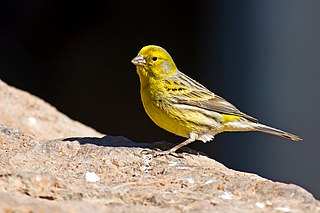
The Atlantic canary, known worldwide simply as the wild canary and also called the island canary, common canary, or canary, is a small passerine bird belonging to the genus Serinus in the true finch family, Fringillidae. It is native to the Canary Islands, the Azores, and Madeira. Wild birds are mostly yellow-green, with brownish streaking on the back. The species is common in captivity and a number of colour varieties have been bred.

Macaronesia is a collection of four volcanic archipelagos in the North Atlantic, off the coasts of Africa and Europe. Each archipelago is made up of a number of Atlantic oceanic islands, which are formed by seamounts on the ocean floor whose peaks have risen above the ocean's surface. They are grouped politically into four groups- the Azores and Madeira archipelagos are part of Portugal, the Canary Islands are part of Spain, and the Cape Verde islands comprise their own sovereign nation. Politically, the islands belonging to Portugal and Spain are part of the European Union. Geologically, most of Macaronesia is part of the African tectonic plate. The Azores are located in the triple junction between the Eurasian, North American and African plates.

Pinus canariensis, the Canary Island pine, is a species of gymnosperm in the conifer family Pinaceae. It is a large, evergreen tree, native and endemic to the outer Canary Islands of the Atlantic Ocean.

The trocaz pigeon, Madeira laurel pigeon or long-toed pigeon is a pigeon which is endemic to the island of Madeira, Portugal. It is a mainly grey bird with a pinkish breast; its silvery neck patch and lack of white wing markings distinguish it from its close relative and probable ancestor, the common wood pigeon. Its call is a characteristic six-note cooing, weaker and lower-pitched than that of the wood pigeon. Despite its bulky, long-tailed appearance, this pigeon has a fast, direct flight.
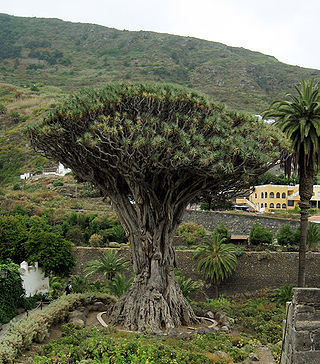
Dracaena draco, the Canary Islands dragon tree or drago, is a subtropical tree in the genus Dracaena, native to the Canary Islands, Cape Verde, Madeira, western Morocco, and possibly introduced into the Azores.

Lotus berthelotii is a flowering plant endemic to the Canary Islands of Spain, in the genus Lotus of the pea family Fabaceae. Among its common names are lotus vine flower, parrot beak, pelican beak, and coral gem. This plant is widely cultivated but is either extinct in the wild or persists as a few individuals. In 1884 it was already classed as "exceedingly rare" and plant collection probably hastened its decline.
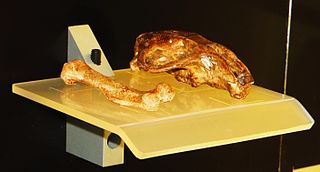
The Gran Canaria giant rat is an extinct species of rat endemic to the island of Gran Canaria.
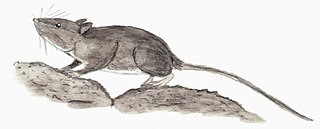
The lava mouse is an extinct endemic rodent from the Canary Islands, Spain. It is the only species in the genus Malpaisomys.
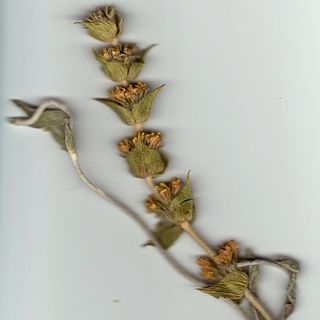
Sideritis, also known as ironwort, mountain tea, and shepherd's tea, is a genus of flowering plants known for their use as herbal medicine, commonly as a herbal tea. They are abundant in Mediterranean regions, the Balkans, the Iberian Peninsula and Macaronesia, but can also be found in Central Europe and temperate Asia.
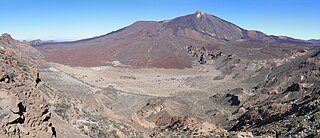
Teide National Park is a national park located in Tenerife, Canary Islands, Spain.
Dusty Miller may refer to:
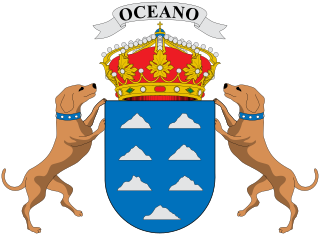
The coat of arms of the Canary Islands is the central device of the flag of the Canary Islands, Spain. The designs were made official by the Statute of Autonomy of the Canarian Autonomous Community on 10 August 1982.

Ocotea foetens, commonly called til or stinkwood is a species of tree in the family Lauraceae. It is evergreen and grows up to 40 m tall. It is a common constituent of the laurisilva forests of Madeira and the Canary Islands. Leaf fossils of this species are known from the Mio-Pleistocene of Madeira Island.

Fernando Estévez was a Spanish sculptor of the 18th century from La Orotava, Tenerife. He is considered one of the Canary Islands most noted sculptors.

Acmispon argophyllus, synonym Lotus argophyllus, is a species of legume native to California and northwest Mexico. It is known by the common name silver bird's-foot trefoil or silver lotus.
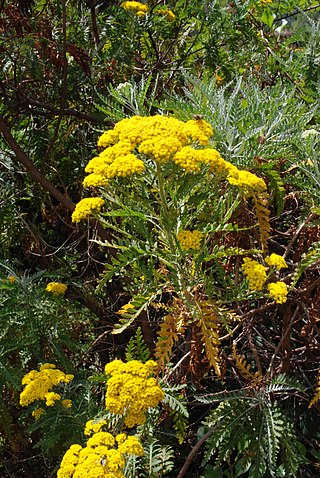
Gonospermum is a genus of flowering plants in the sunflower family.

Echium wildpretii subsp. trichosiphon is a species of Echium that is found high up in the area of La Caldera de Taburiente on the Canary Island of La Palma. Like its sister plant on Tenerife, this plant forms a large rosette of silvery leaves which eventually give rise to tall spikes of bright pink flowers. The plant is biennial and dies after flowering. This plant can be grown in gardens, but requires good drainage and fairly mild conditions. The plant hates water falling in the centre of the rosette and will often rot in such conditions.
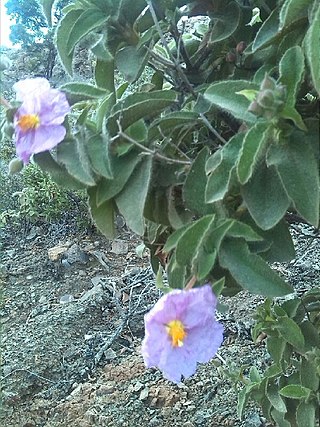
Cistus horrens is a shrubby species of flowering plant in the family Cistaceae, with purple to pink flowers. It is endemic to Gran Canaria in the Canary Islands. First described as a species in 2004, it was previously identified as Cistus symphytifolius, which it resembles.

Cistus symphytifolius is a shrubby species of flowering plant in the family Cistaceae. It is endemic to the Canary Islands".



















